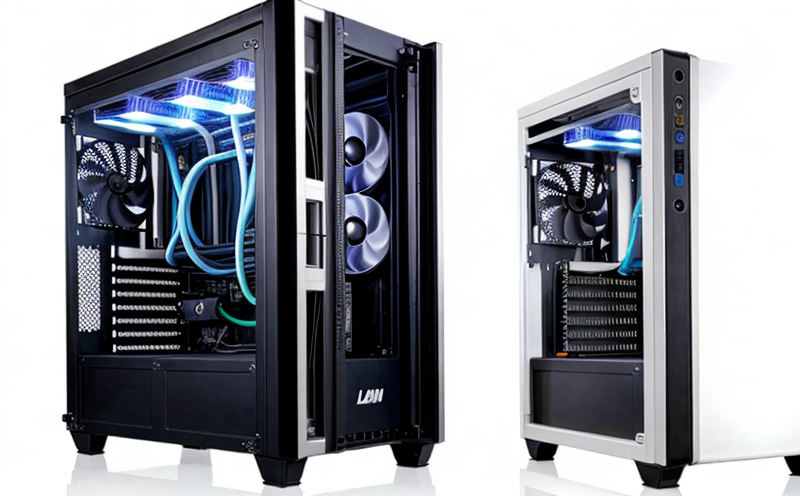ISO 7730 Thermal Comfort Load Evaluation
The ISO 7730 standard provides a framework to evaluate thermal comfort in indoor environments. This service, ISO 7730 Thermal Comfort Load Evaluation, is crucial for ensuring that HVAC equipment meets the specified conditions set by this international standard. The evaluation involves detailed testing of various parameters such as air temperature, humidity levels, and velocity, which are critical to achieving and maintaining thermal comfort.
The process begins with thorough preparation of the test environment. This includes ensuring that all equipment is in optimal working condition before starting any tests. During the actual testing phase, a series of measurements need to be taken at different points within the space being evaluated. These measurements will help determine whether the HVAC system can effectively maintain thermal comfort according to ISO 7730 requirements.
Once collected, these data points are analyzed using statistical methods outlined in the standard to assess compliance with its criteria for providing acceptable levels of thermal comfort. If any areas fail to meet these standards, recommendations will be provided on necessary adjustments that can be made to improve performance and ensure full compliance.
| Parameter | Description |
|---|---|
| Air Temperature | The temperature of the air in the space being evaluated. |
| Humidity Levels | The relative humidity present within the space under test conditions. |
| Air Velocity | The speed at which air moves through the space during testing. |
| Occupant Density | The number of people occupying the space per square meter, impacting heat generation and distribution needs. |
Understanding these parameters is essential for accurate evaluation because they directly influence how well the HVAC system performs in maintaining thermal comfort. By carefully monitoring each factor throughout the testing process, we can ensure that our findings are reliable and actionable recommendations can be provided to clients.
- Data collection must adhere strictly to ISO 7730 guidelines.
- Analysis should focus on identifying discrepancies between actual measurements and specified limits outlined in the standard.
- Recommendations for improvement should address any identified issues while also considering cost-effectiveness.
This service ensures not only compliance with international standards but also enhances overall building efficiency by optimizing HVAC performance. It plays a vital role in creating healthier, more productive work environments that meet user expectations regarding comfort and well-being.
Why It Matters
The evaluation of thermal comfort according to ISO 7730 is essential for several reasons. Firstly, it contributes significantly to occupant satisfaction by ensuring that indoor spaces provide a comfortable temperature range, humidity levels, and air quality. Secondly, compliance with this standard helps organizations meet their sustainability goals by reducing energy consumption related to HVAC systems.
From an operational standpoint, maintaining optimal thermal comfort reduces absenteeism due to discomfort-related illnesses among employees or residents. Moreover, it improves productivity because individuals are less distracted by feeling either too hot or cold in their workspace.
Compliance also offers a competitive edge since consumers increasingly prefer eco-friendly buildings that prioritize occupant health and well-being over cost alone. For businesses looking to attract top talent, providing environments where employees feel comfortable can be a deciding factor.
In summary, ISO 7730 compliance is not just about meeting regulatory requirements; it’s about creating spaces that enhance human experience through thoughtful design and engineering practices. By offering this service, we help our clients achieve these objectives while ensuring long-term benefits for everyone involved.
Competitive Advantage and Market Impact
The ability to offer comprehensive ISO 7730 thermal comfort load evaluations provides significant competitive advantages in the HVAC industry. In an era where sustainability and occupant well-being are top priorities, demonstrating expertise in this area sets your organization apart from competitors who may not prioritize such standards.
By ensuring that all aspects of a building’s environmental control systems meet or exceed ISO 7730 requirements, you can establish yourself as a leader in green technology solutions. This positioning appeals to environmentally conscious clients and stakeholders who value both performance and ethical practices.
The market impact extends beyond individual projects; it contributes positively to industry trends towards more sustainable design and operation strategies. As more companies adopt these practices, the overall quality of indoor spaces improves, leading to better health outcomes for occupants across various sectors including commercial offices, schools, hospitals, and residential complexes.
Furthermore, being able to provide reliable evaluation services according to internationally recognized standards enhances trust between service providers like ourselves and our clients. This trust fosters long-term relationships built on mutual respect and shared goals aimed at improving both business operations and environmental impact.
Use Cases and Application Examples
The ISO 7730 thermal comfort load evaluation has numerous applications across different sectors. One common use case involves new construction projects where architects and builders need assurance that their designs will meet the specified thermal comfort criteria before finalizing plans.
- New office buildings aiming to achieve LEED certification often require rigorous testing to ensure compliance with energy efficiency standards, which include meeting ISO 7730 requirements for thermal comfort.
- Existing facilities undergoing renovations or expansions might benefit from this service to identify areas needing improvement without disrupting ongoing operations.
In both cases, the evaluation helps stakeholders make informed decisions regarding HVAC system selection and installation, ultimately resulting in more efficient and comfortable spaces.
| Project Type | Description |
|---|---|
| New Construction | A building being constructed for the first time. |
| Retrofit | An existing structure being modified or updated. |
| Renovation | The process of altering an existing facility to improve its appearance, functionality, or value. |
In addition to these examples, the evaluation can also be applied during routine maintenance intervals for commercial properties. Regular checks ensure that HVAC systems continue to operate efficiently and effectively over time.





